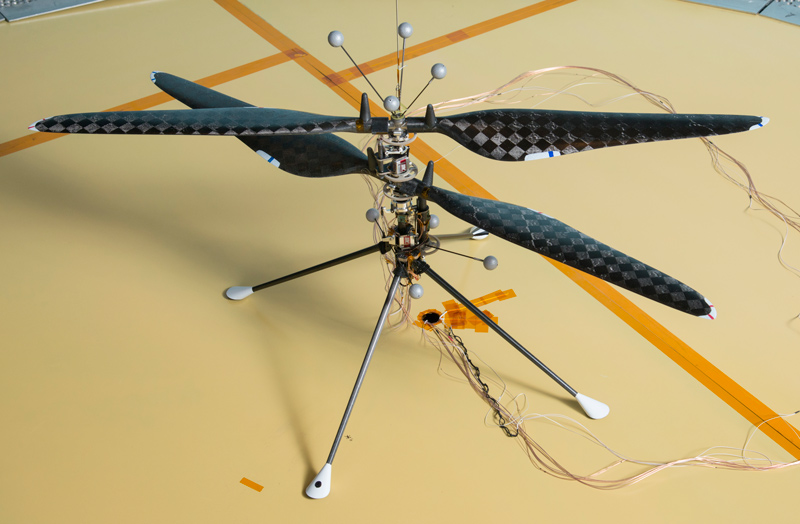Washington: NASA’s Mars Helicopter, designed to fly in thin atmosphere and low gravity, has successfully completed flight tests and is prepared for its journey to the Red Planet scheduled to take off in 2020, the US space agency said.
Weighing in at no more than 1.8 kilograms, the helicopter is a technology demonstration project currently going through the rigorous verification process certifying it for Mars.
The majority of the testing the flight model is going through had to do with demonstrating how it can operate on Mars, including how it performs at Mars-like temperatures, NASA said in a statement.
The helicopter has to function in extremely cold temperatures, including nights with temperatures as low as minus 90 degrees Celsius.
The helicopter is scheduled to reach the surface of the Red Planet in February 2021, when the firmly nestled under the belly of the Mars 2020 rover.
A few months later, it will be deployed and test flights will begin — the first from the surface of another world, NASA said.
“Gearing up for that first flight on Mars, we have logged over 75 minutes of flying time with an engineering model, which was a close approximation of our helicopter,” said MiMi Aung, project manager for the Mars Helicopter at NASA’s Jet Propulsion Laboratory in the US.
“But this recent test of the flight model was the real deal. This is our helicopter bound for Mars. We needed to see that it worked as advertised,” said Aung.
While flying helicopters is commonplace here on Earth, flying hundreds of millions of kilometers away in the thin Martian atmosphere is something else entirely.
Creating the right conditions for testing here on Earth presents its own set of challenges.
“The Martian atmosphere is only about one per cent the density of Earth’s,” said Aung.
“Our test flights could have similar atmospheric density here on Earth — if you put your airfield 30,480 meters up. So you can’t go somewhere and find that. You have to make it,” she said.
The team created a vacuum that sucks out all the nitrogen, oxygen and other gases from the air inside the mammoth cylinder. In their place the team injected carbon dioxide, the chief ingredient of Mars’ atmosphere.
“Getting our helicopter into an extremely thin atmosphere is only part of the challenge,” said Teddy Tzanetos, test conductor for the Mars Helicopter at JPL.
“To truly simulate flying on Mars we have to take away two-thirds of Earth’s gravity, because Mars’ gravity is that much weaker,” said Tzanetos.
The team accomplished this with a gravity offload system — a motorised lanyard attached to the top of the helicopter to provide an uninterrupted tug equivalent to two-thirds of Earth’s gravity.
The Mars Helicopter’s first flight was followed up by a second in the vacuum chamber the following day. Logging a total of one minute of flight time at an altitude of five centimeters, more than 1,500 individual pieces of carbon fiber, flight-grade aluminum, silicon, copper, foil and foam have proven that they can work together as a cohesive unit.
“The next time we fly, we fly on Mars,” said Aung.
The Mars Helicopter will launch as a technology demonstrator with the Mars 2020 rover on a United Launch Alliance Atlas V rocket in July 2020 from Space Launch Complex 41 at Cape Canaveral Air Force Station, Florida. It is expected to reach Mars in February 2021.
PTI
